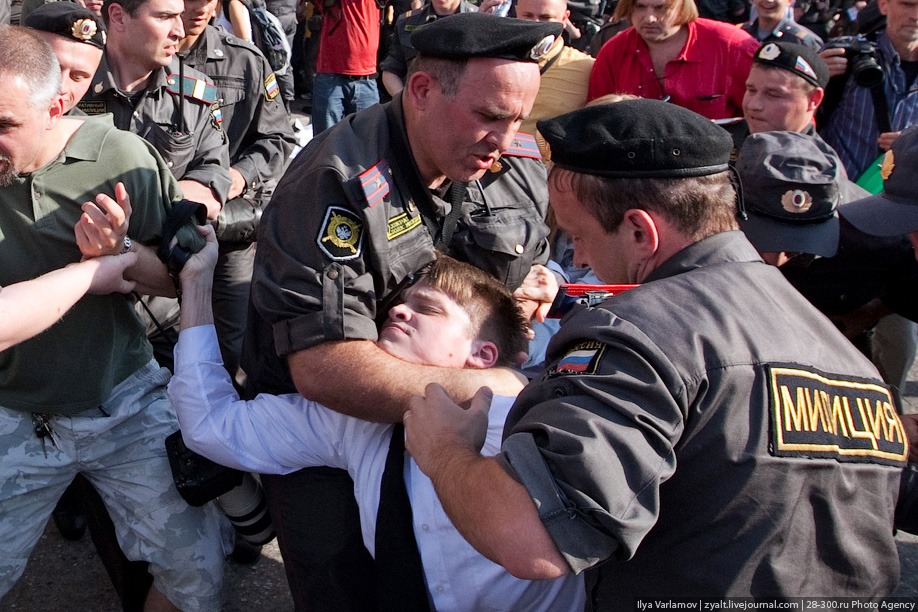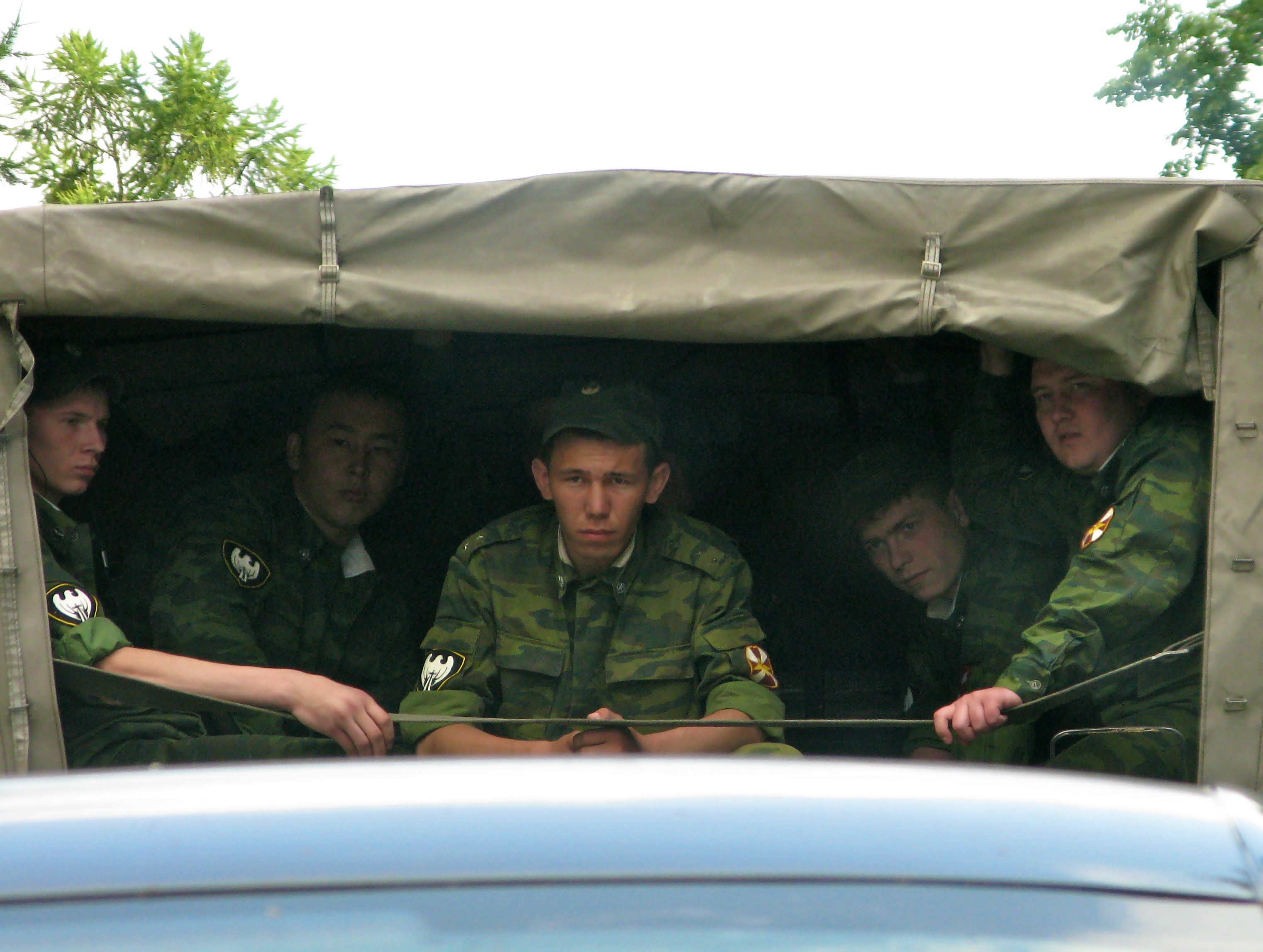|
Rosgvardiya
The Federal Service of Troops of National Guard of the Russian Federation (), officially known as the (),#Official website, Official website is a federal executive body which is responsible for law enforcement, internal security, counter-terrorism and riot control of the Russia, Russian Federation. It is an independent agency that reports directly to the President of Russia, under the president's powers as Commander in Chief of the Armed Forces of the Russian Federation, Russian Armed Forces and Chairman of the Security Council of Russia, Russian Security Council. , the National Guard consisted of approximately 340,000 personnel in 84 units across Russia. It includes the forces of the former Internal Troops of Russia, SOBR, OMON, and other internal military forces outside of the Russian Armed Forces. The National Guard is separate from the Armed Forces. It became a federal executive body in 2016 by a law signed by President Vladimir Putin. The National Guard states that its mis ... [...More Info...] [...Related Items...] OR: [Wikipedia] [Google] [Baidu] |
OMON
OMON is a system of military special police units within the Armed Forces of Russia. It previously operated within the structures of the Soviet and Russian Ministries of Internal Affairs (MVD). Originating as the special forces unit of the Soviet Militsiya in 1988, it has played major roles in several armed conflicts during and following the 1991 dissolution of the Soviet Union. OMON is much larger and better known than SOBR, another special-police branch of the National Guard of Russia. In modern contexts, OMON serves as a riot police group, or as a gendarmerie-like paramilitary force. OMON units also exist in Belarus, Kazakhstan, Tajikistan, and other post-Soviet states. However, some post-Soviet units have changed names and acronyms. Russian speakers commonly refer to OMON officers as ''omonovtsy'' (; singular: omonovyets – ). On 5 April 2016 OMON became part of the newly-established National Guard of Russia, ending its years as part of the MVD. The MVD continues to ... [...More Info...] [...Related Items...] OR: [Wikipedia] [Google] [Baidu] |
SOBR
The Special Rapid Response Unit or SOBR (), from 2002 to 2011 known as OMSN (''Otryad Militsii Spetsial'nogo Naznacheniya'', Special Police Unit), is a spetsnaz unit of the National Guard of Russia (Rosgvardiya).With their military equipment, uniforms and training, the OMON and SOBR constitute a rapid reaction and rapid insertion paramilitary police force available to the regular police - normally deployable at the discretion of a police local command. They serve a similar function to a police tactical unit (PTU). Groups named "SOBR" also operate in other post-Soviet countries - such as Kazakhstan and Kyrgyzstan. History SOBR was formed on 10 February 1992, and was subordinated to the "Directorate for combating the Organized Crime" under the Russian Interior Ministry ( MVD). SOBR units were composed of senior-ranking police officers, better trained than the members of OMON (which is a cross between riot police and gendarmerie (paramilitary police)), and tasked with PTU oper ... [...More Info...] [...Related Items...] OR: [Wikipedia] [Google] [Baidu] |
Viktor Zolotov
Viktor Vasilyevich Zolotov (; born 27 January 1954) is a Russian military officer who is the Director of the National Guard (Rosgvardiya, concurrently serving as National Guard Forces Commander-in-Chief) and a member of the Security Council. Zolotov is a former bodyguard to former President Boris Yeltsin, former St. Petersburg Mayor Anatoly Sobchak, and current Russian leader Vladimir Putin. While working for Sobchak, Zolotov became acquainted with Putin, as well as figures in the St. Petersburg criminal underworld. A member of Putin's ''siloviki'' inner circle, Zolotov's rise to power and wealth happened after he became a close Putin confidant. The Zolotov family has obtained valuable land plots through dubious means. Youth Zolotov was born in 1954 in Sasovo in Ryazan Oblast into a working-class family and worked as a lathe operator. Pete Earley. '' Comrade J.: The Untold Secrets of Russia's Master Spy in America after the End of the Cold War'', Putnam Adult (24 January 2008) ... [...More Info...] [...Related Items...] OR: [Wikipedia] [Google] [Baidu] |
Jane's Intelligence Review
''Jane's Intelligence Review'' was a monthly journal on global security and stability issues published by Jane's Information Group. Its coverage includes international security issues, state stability, terrorism and insurgency, ongoing conflicts, organized crime, and weapons proliferation. History ''Jane's Soviet Intelligence Review'' (1989–1991) It was first published in January 1989 as ''Jane's Soviet Intelligence Review'', although a pilot edition had been produced in September the previous year and distributed at the Farnborough Airshow in order to test the market. Uniquely for Jane's—and its then parent company, the Thomson Corporation—the magazine carried no advertising but relied on subscription revenue only. It was profitable in its first year of publication and is believed to have remained profitable ever since. Among the first subscribers were the then vice-president of the United States, Dan Quayle, and the author Tom Clancy. Included in the January 1989 issue w ... [...More Info...] [...Related Items...] OR: [Wikipedia] [Google] [Baidu] |
Alexander I Of Russia
Alexander I (, ; – ), nicknamed "the Blessed", was Emperor of Russia from 1801, the first king of Congress Poland from 1815, and the grand duke of Finland from 1809 to his death in 1825. He ruled Russian Empire, Russia during the chaotic period of the Napoleonic Wars. The eldest son of Emperor Paul I and Sophie Dorothea of Württemberg, Alexander succeeded to the throne after his father was murdered. As prince and during the early years of his reign, he often used liberal rhetoric but continued Russian absolutism, Russia's absolutist policies in practice. In the first years of his reign, he initiated some minor social reforms and (in 1803–04) major liberal educational reforms, such as building more universities. Alexander appointed Mikhail Speransky, the son of a village priest, as one of his closest advisors. The over-centralized Collegium (ministry), Collegium ministries were abolished and replaced by the Committee of Ministers of the Russian Empire, Committee of Ministers ... [...More Info...] [...Related Items...] OR: [Wikipedia] [Google] [Baidu] |
Old Style And New Style Dates
Old Style (O.S.) and New Style (N.S.) indicate dating systems before and after a calendar change, respectively. Usually, they refer to the change from the Julian calendar to the Gregorian calendar as enacted in various Europe, European countries between 1582 and 1923. In England, Wales, Ireland and British America, Britain's American colonies, there were two calendar changes, both in 1752. The first adjusted the start of a new year from 25 March (Lady Day, the Feast of the Annunciation) to 1 January, a change which Scotland had made in 1600. The second discarded the Julian calendar in favour of the Gregorian calendar, skipping 11 days in the month of September to do so.. "Before 1752, parish registers, in addition to a new year heading after 24th March showing, for example '1733', had another heading at the end of the following December indicating '1733/4'. This showed where the Historical Year 1734 started even though the Civil Year 1733 continued until 24th March. ... We as h ... [...More Info...] [...Related Items...] OR: [Wikipedia] [Google] [Baidu] |
National Guard Day (Russia)
National Guard Day () is an official holiday that honors the National Guard of Russia, celebrated on 27 March. History On 16 January 2017, President Vladimir Putin issued a decree establishing 27 March as the Day of the National Guard. From 1996 to 2016, this day was celebrated as the Day of Internal Troops of Russia. The Day of Internal Troops was established by President Boris Yeltsin on 19 March 1996. The celebration of the Day of Internal Troops is historically liked to several decrees of Tsar Alexander I on the reorganization of the garrison units of the army and the creation of the Internal Guard. One of the final decrees, dated 27 March (8 April in the Gregorian calendar), 1811, marked the organization of the first Internal Guard. Traditions On this day, the command of the Russian Guard gives military personnel, employees with special police ranks and civilian personnel awards, gives thanks, assigns military and special ranks. Greetings are extended by the President of Rus ... [...More Info...] [...Related Items...] OR: [Wikipedia] [Google] [Baidu] |
Ministry Of Internal Affairs (Russia)
The Ministry of Internal Affairs of the Russian Federation (MVD; , ''Ministerstvo vnutrennikh del'') is the interior ministry of Russia. The MVD is responsible for law enforcement in Russia through its agencies the Police of Russia, Migration Affairs, Drugs Control, Traffic Safety, the Centre for Combating Extremism, and the Investigative Department. The MVD is headquartered in Zhitnaya Street 16 in Yakimanka, Moscow. Vladimir Kolokoltsev has been the Minister of Internal Affairs since 2012. History Russian Empire (1802–1917) The first interior ministry (MVD) in Russia was created by Tsar Alexander I on 28 March 1802. The MVD was one of the most powerful governmental bodies of the Empire, responsible for the police forces and Internal Guards, and the supervision of gubernial administrations. Its initial responsibilities also included prisons, firefighting, state enterprises, the state postal system, state property, construction, roads, medicine, clergy, natural re ... [...More Info...] [...Related Items...] OR: [Wikipedia] [Google] [Baidu] |
Internal Troops Of Russia
The Internal Troops of the Ministry for Internal Affairs of the Russian Federation () was a paramilitary force of the Ministry of Internal Affairs (Russia), Ministry of Internal Affairs of Russia from 1991 to 2016. The Internal Troops was a gendarmerie-like force that supported the Police of Russia, Russian police, dealt with crowd control during riots and internal conflicts, and guarded highly-important facilities such as nuclear power plants. The Internal Troops was involved in all conflicts and violent disturbances in modern Russia, including the First Chechen War, First and Second Chechen Wars, where it fell under direct military command during wartime and fulfilled missions of local defence and Rear Area, rear area security. The Internal Troops consisted of both Military volunteer, volunteers and conscripts, which caused the number of active service members to fluctuate, with less than 200,000 upon their disestablishment from a peak strength of 350,000, and had experienced ... [...More Info...] [...Related Items...] OR: [Wikipedia] [Google] [Baidu] |
Brigade
A brigade is a major tactical military unit, military formation that typically comprises three to six battalions plus supporting elements. It is roughly equivalent to an enlarged or reinforced regiment. Two or more brigades may constitute a Division (military), division. Brigades formed into divisions are usually infantry or armored (sometimes referred to as combined arms brigades). In addition to combat units, they may include combat support units or sub-units, such as artillery and engineers, and logistic units. Historically, such brigades have been called brigade-groups. On operations, a brigade may comprise both organic elements and attached elements, including some temporarily attached for a specific task. Brigades may also be specialized and comprise battalions of a single branch, for example cavalry, mechanized, armored, artillery, air defence, aviation, engineers, signals or logistic. Some brigades are classified as independent or separate and operate independentl ... [...More Info...] [...Related Items...] OR: [Wikipedia] [Google] [Baidu] |




